Learn more about…
People have introduced plants from all over the world to Wisconsin to add beauty, a new fruit, or a new food source for livestock. Most of these have been relatively harmless, but some of these plants can dramatically change the character of our forests—and not for the better. Think of your woods like a sports team where each native species has a position to play. Invasive species are like rogue players who hog the ball to themselves and end up hurting your team’s chances of doing well.
Keep reading to learn why invasive plants are a problem and how to identify them in your woods so that you can start managing them.
Jump to section
What makes a plant invasive?
When we call a plant “invasive,” we mean that it is non-native (not historically found in Wisconsin) AND that it harms the environment, the economy, or human health.
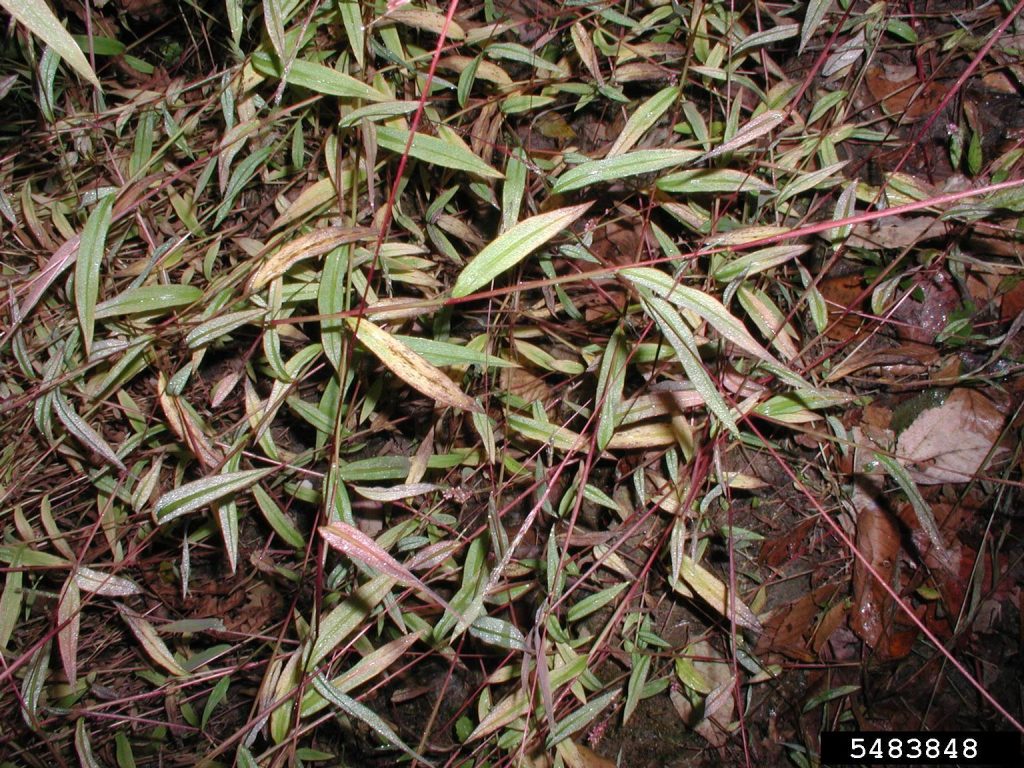
Environment
Invasive species are the primary threat facing an estimated 38% of species on the federal Threatened or Endangered species lists. Some invasive plants are “ecosystem transformers,” meaning that they change the environment so drastically that it can’t return to normal, even after the invasive plants are removed.
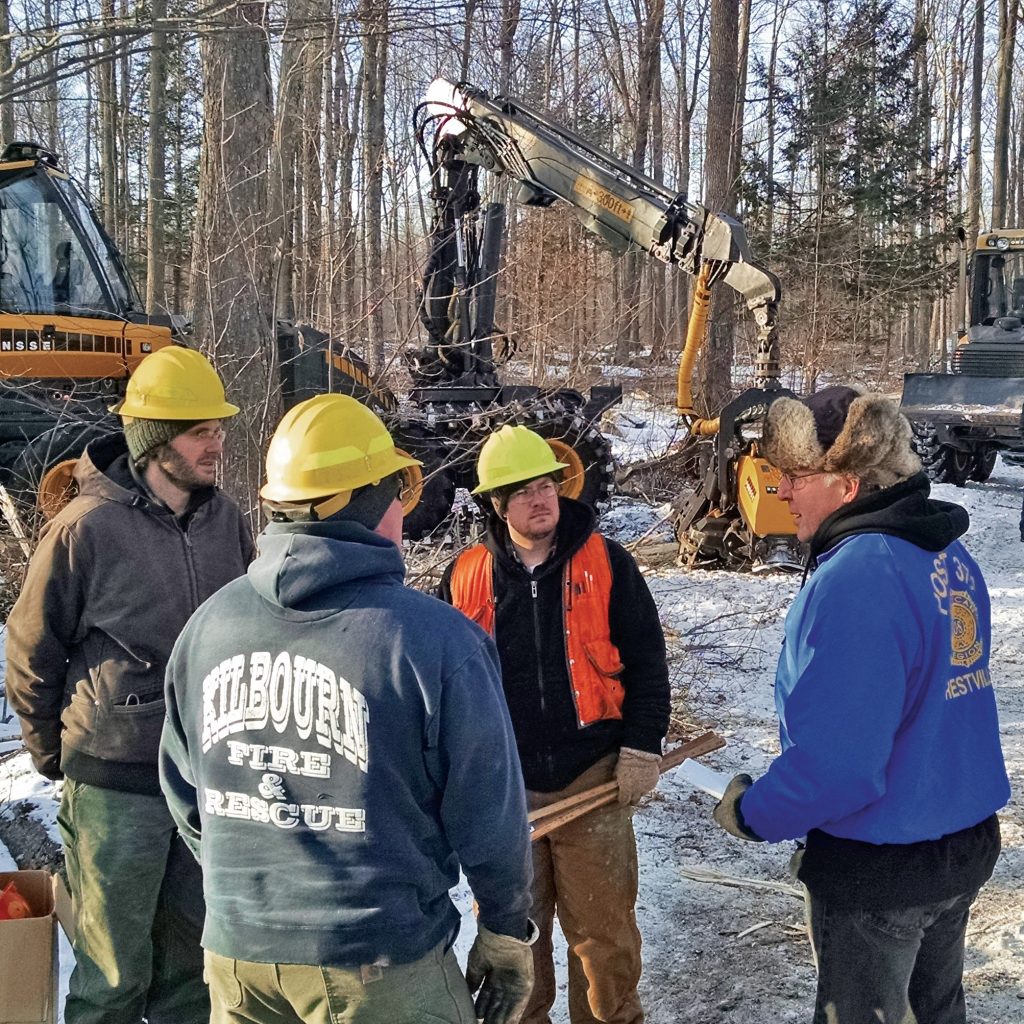
Economy
Over the course of a decade or two, invasive shrubs can decrease the amount of merchantable timber in a forest by 15-30%. This decline in timber quality has negative ripple effects on Wisconsin’s $42 billion forest products industry.
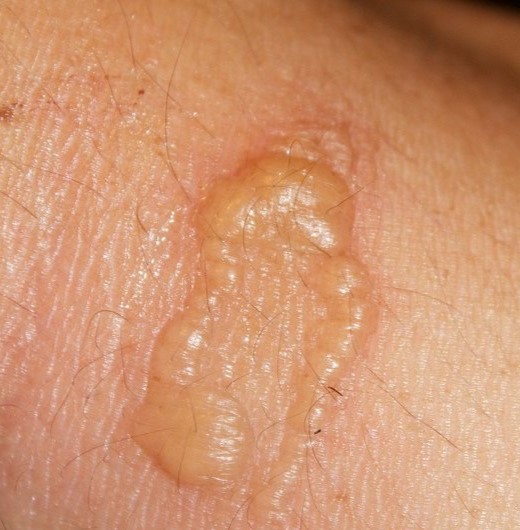
Human health
Some invasive plants are toxic to humans. For example, if the sap or juice of wild parsnip touches you, your skin becomes extra sensitive to sunlight, causing rashes and blisters. Japanese barberry is not toxic to touch, but it creates more habitat for deer ticks, which can give people Lyme disease.
Most non-native plants are not invasive. When a new plant first arrives, it’s impossible to predict with certainty whether it will become invasive. But here are a few common characteristics of invasive plants, along with examples:
- They have no natural predators in their new habitat. Deer avoid eating Japanese barberry, which gives it an advantage over native plants.
- They produce lots of seeds. One garlic mustard plant can release hundreds or thousands of seeds when it matures.
- They have aggressive root systems. A single black locust tree can create a dense grove of clones, and any damage to the roots causes them to spread vigorously.
- They can thrive on disturbed sites. Phragmites (common reed) is commonly found in disturbed wetlands.
- They release chemicals that are toxic to surrounding plants. Amur cork trees release allelopathic compounds that change the soil microbes and hurt nearby plants.
- They leaf out earlier and drop their leaves later than native plants, which gives them a longer growing season while casting shade on other plants. Buckthorn is often the last green plant in woodlands in late fall (aside from evergreens).
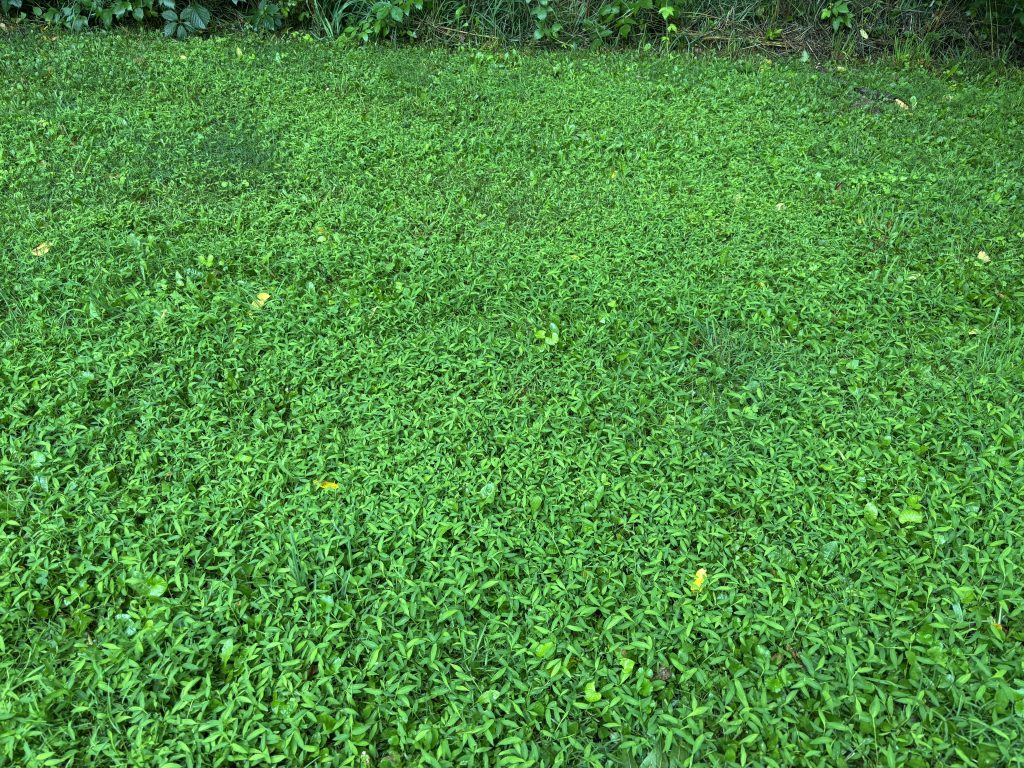
Unpacking the limitations of the term “invasive”
The term “invasive species” can make it sound like the plants intentionally disrupt native ecosystems. In fact, plants that we consider “invasive” are neither inherently good nor inherently bad—they’re just doing what they evolved to do, and they did not ask to be moved to new regions. Indigenous communities such as the Ojibwe often use the term “non-local beings” to better reflect that these are plants out of place rather than an invading army.
Using the term “invasive” also implies that responding to these plants requires aggressive confrontation. In many cases, that is true. However, tackling a very large infestation may involve a huge investment of labor, time, and money! It’s often better to prioritize your invasive management efforts and start treating smaller populations before you tackle bigger ones.
For most of the species highlighted on this page, our current recommendations (based on the best available evidence) do involve taking active management measures. But future research on non-local species may reveal other situations where a more nuanced approach is a better way to go.
Invasive plants are not the same thing as weeds. Weeds are plants that people consider undesirable in a certain place or context, regardless of whether they’re native or non-native. For example, white snakeroot is a native plant that benefits woodland ecosystems, but a gardener might consider it a weed if it showed up next to their carrots.
How do invasive plants spread?
Historically, most non-local plant species arrived in North America through the ornamental plant trade, while some arrived accidentally as seeds.
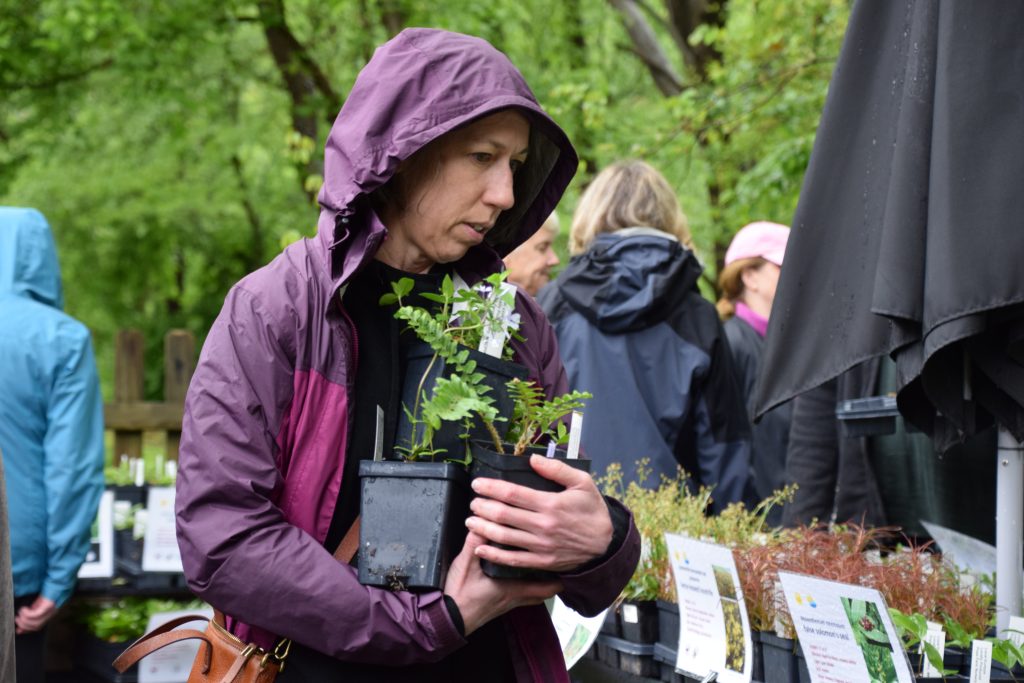
Although people brought them here with good intentions, we now know better and can stop planting plants that have become invasive. In Wisconsin, the DNR’s invasive species rule (NR-40) makes it illegal to transport, transfer, introduce, and (for some species) possess regulated invasive plants. However, it’s still easy to find invasive plants at nurseries and online stores if you’re not careful. Make sure that any plants you buy for your property are not invasive.
Today, people commonly spread invasive plants unintentionally. Plant seeds can easily hitch a ride on clothing, boots, vehicles, and equipment. Before you travel from one forest to another, make sure to clean off mud, seeds, and vegetation from everything you bring with you, including your pets.
Another way that invasive plants spread locally is through wildlife. A bird might eat the fruit of a honeysuckle, fly to a nearby patch of woods, and unintentionally plant the seed with its droppings.
How do invasive plants affect Wisconsin forests?
As you walk through your woods, perhaps the most obvious impact of invasive plants that you’ll notice is that their dense vegetation takes over the understory, out-competing native plants for light, water, and nutrients.
For example, buckthorn can create too much shade for native wildflowers and tree seedlings to grow, and garlic mustard can hoard water and soil nutrients at the expense of oak seedlings.
If left alone, invasive plants make forests less diverse and weaken or eliminate the next generation of trees. Some invasive plants also harm mature trees. For example, round leaf bittersweet, a woody climbing vine, can shade out trees’ leaves, weigh down crowns, or even girdle the trunks. All these effects make forests less resilient to other stresses like droughts, extreme storms, pests, or diseases. This is especially concerning in light of the many stresses that our forests face as the climate changes.
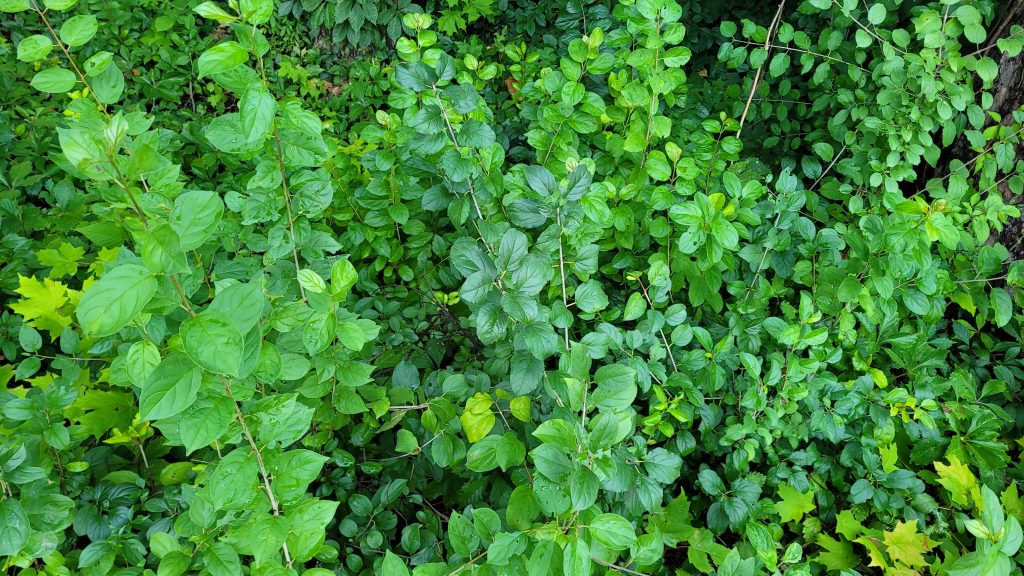
Typically, invasive plants provide worse food for wildlife and pollinators than native plants do. An understory with a diverse range of native plants blooming at different times of year creates a buffet for wildlife and pollinators. In contrast, an understory of just buckthorn and honeysuckle offers a severely limited menu that may not match what animals need. What’s more, when native plants decline, insect populations also tend to suffer, which has ripple effects on the whole ecosystem. For example, bush honeysuckle and Japanese knotweed seem to benefit birds with generalist diets (such as American Goldfinches and American Crows) at the expense of birds with specialist diets (such as many wood warblers).
Invasive plants also get in the way of recreation—literally. By covering trails, they make it hard to hike, bike, or ride on horseback. By creating dense thickets, they make it hard to find a spot to pitch a tent, hunt deer or turkey, or forage for mushrooms.
The negative economic impact of invasive species is substantial, though hard to quantify. In fiscal year 2024, the Wisconsin DNR spent $4.4 million specifically on invasive species management (this figure includes all invasives, not just woodland plants), plus millions more on park maintenance or land conservation projects that necessarily involved managing invasive species. These figures do not include the economic impacts on Wisconsin’s recreation and forest products industries. Across the U.S., invasive species (plants, insects, mussels, and more) had an estimated economic cost of $21 billion per year from 2010 to 2020.
Top invasive plants to know and manage
Currently, the Wisconsin DNR categorizes 145 plants as invasive in the state. Fortunately, you can make a big difference by focusing on controlling just a handful of the plants that cause the worst problems.
Here are some of the highest priority invasive plants to look for in your woodland. Click a plant to learn more about it. Then learn how to manage invasive plants.
Woody invasive plants
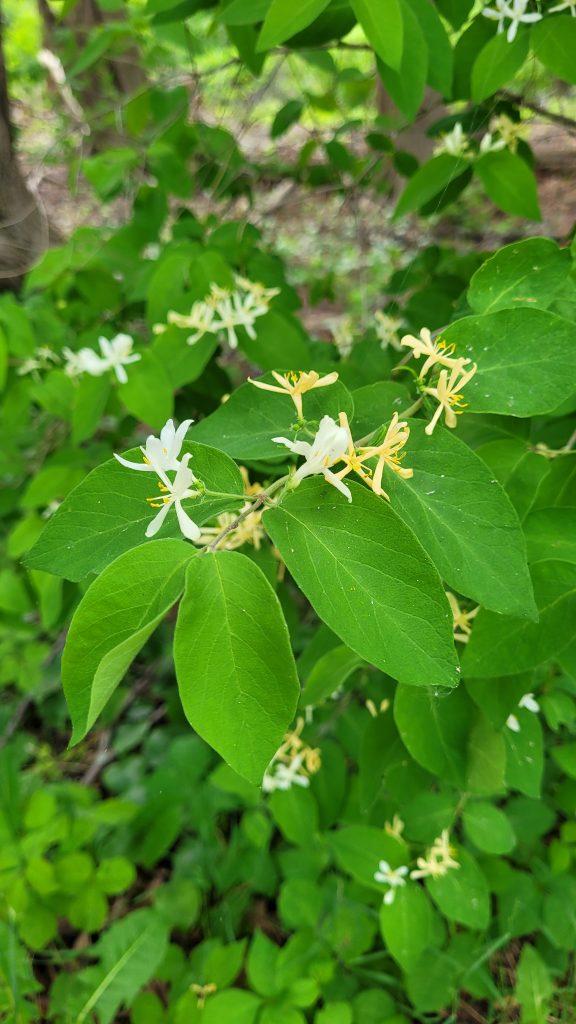
Bush honeysuckles
Shrub with bright red, yellow, or orange berries
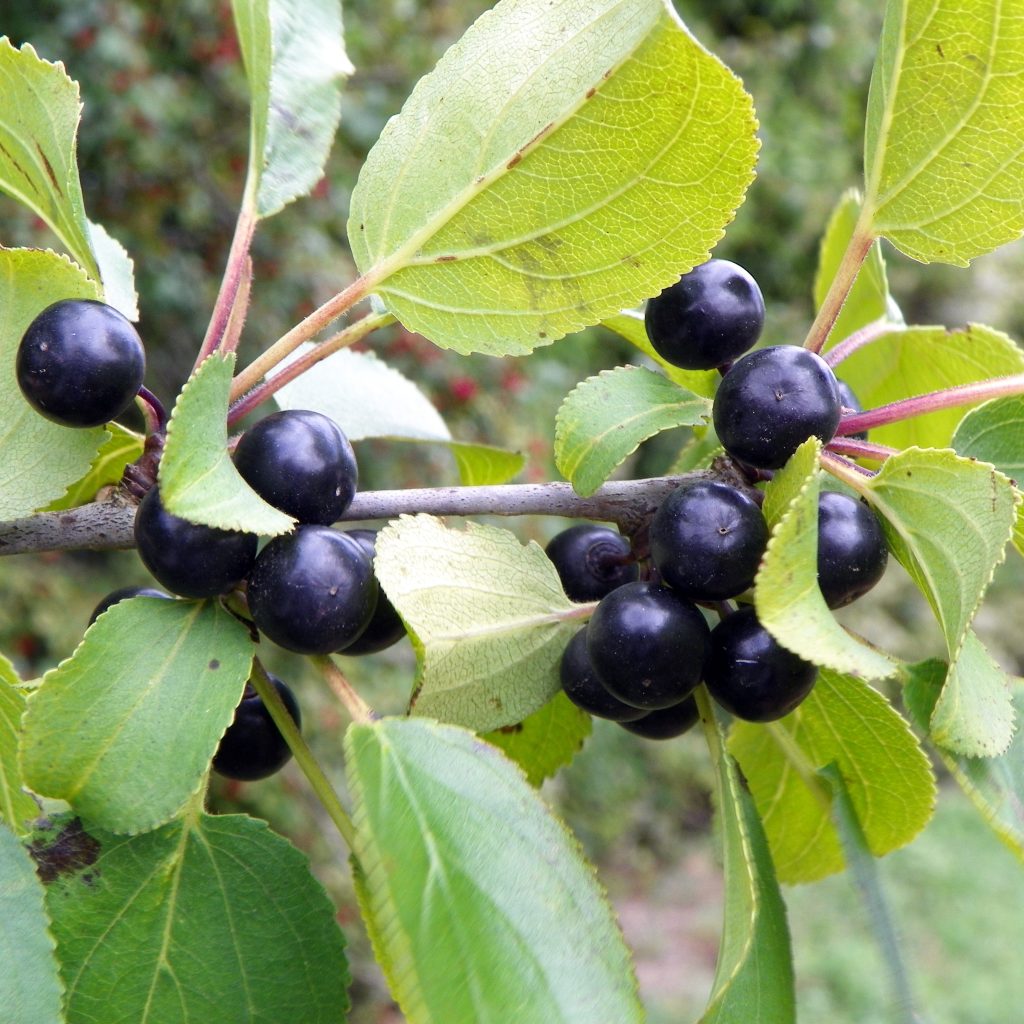
Common/glossy buckthorn
Shrub or small tree with dark purple berries
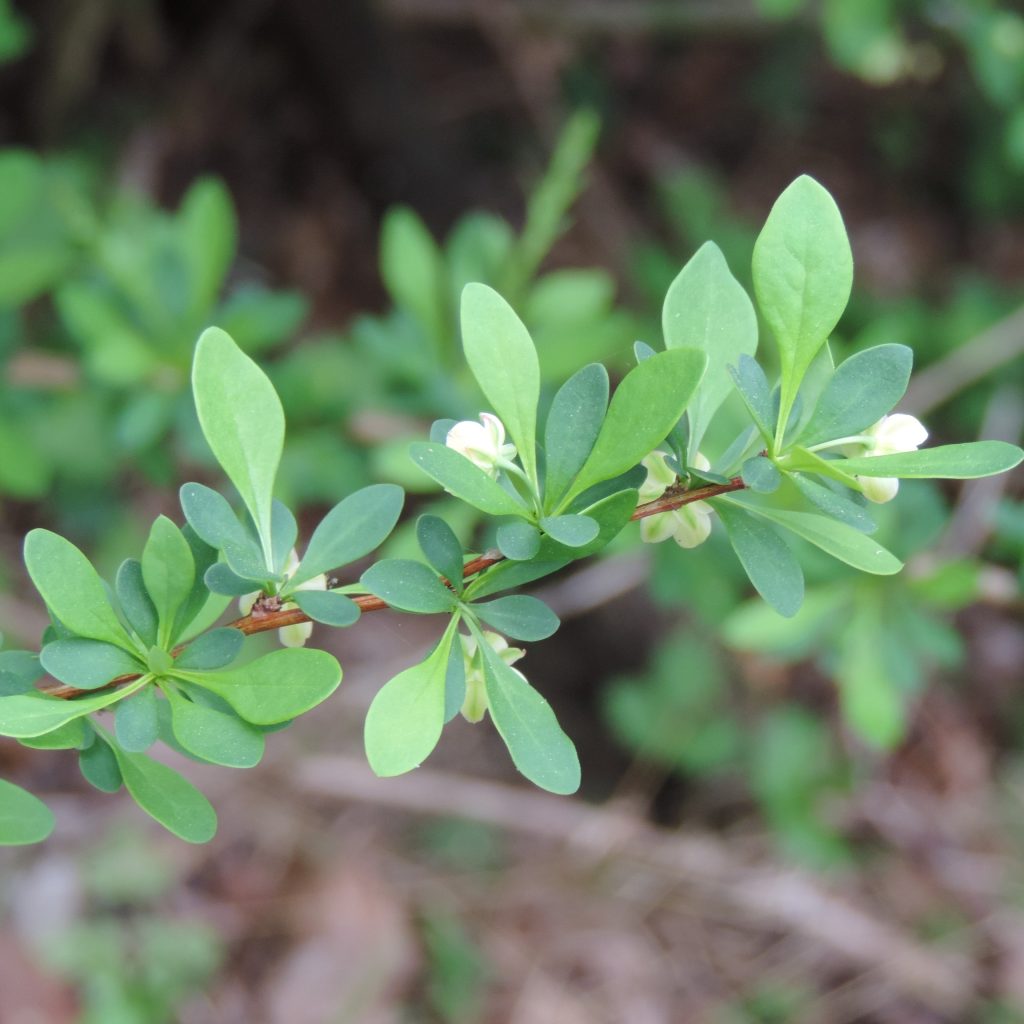
Japanese barberry
Spiny shrub with spatula-shaped leaves and oval red berries
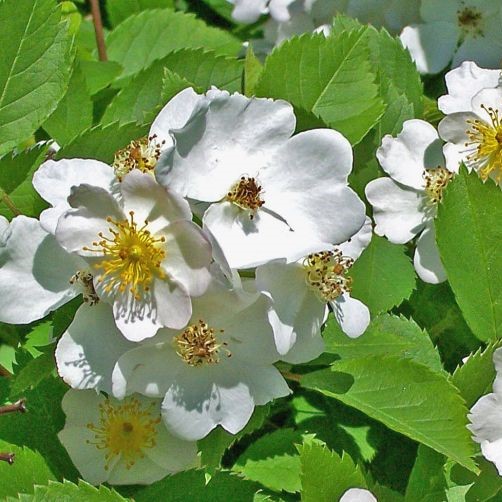
Multiflora rose
Spiny shrub with curved thorns, looks similar to native rose species
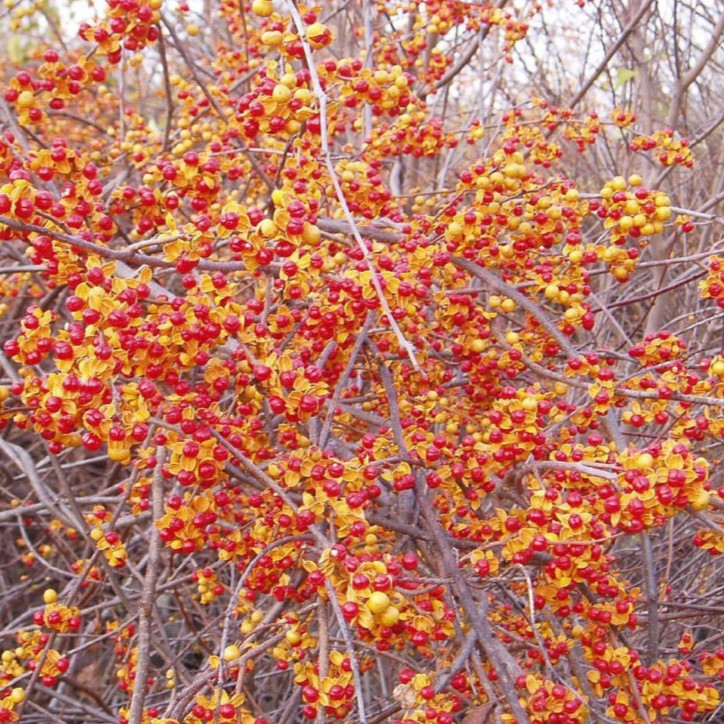
Round leaf bittersweet*
Vine, can reach 4 inches in diameter and 60 feet in length
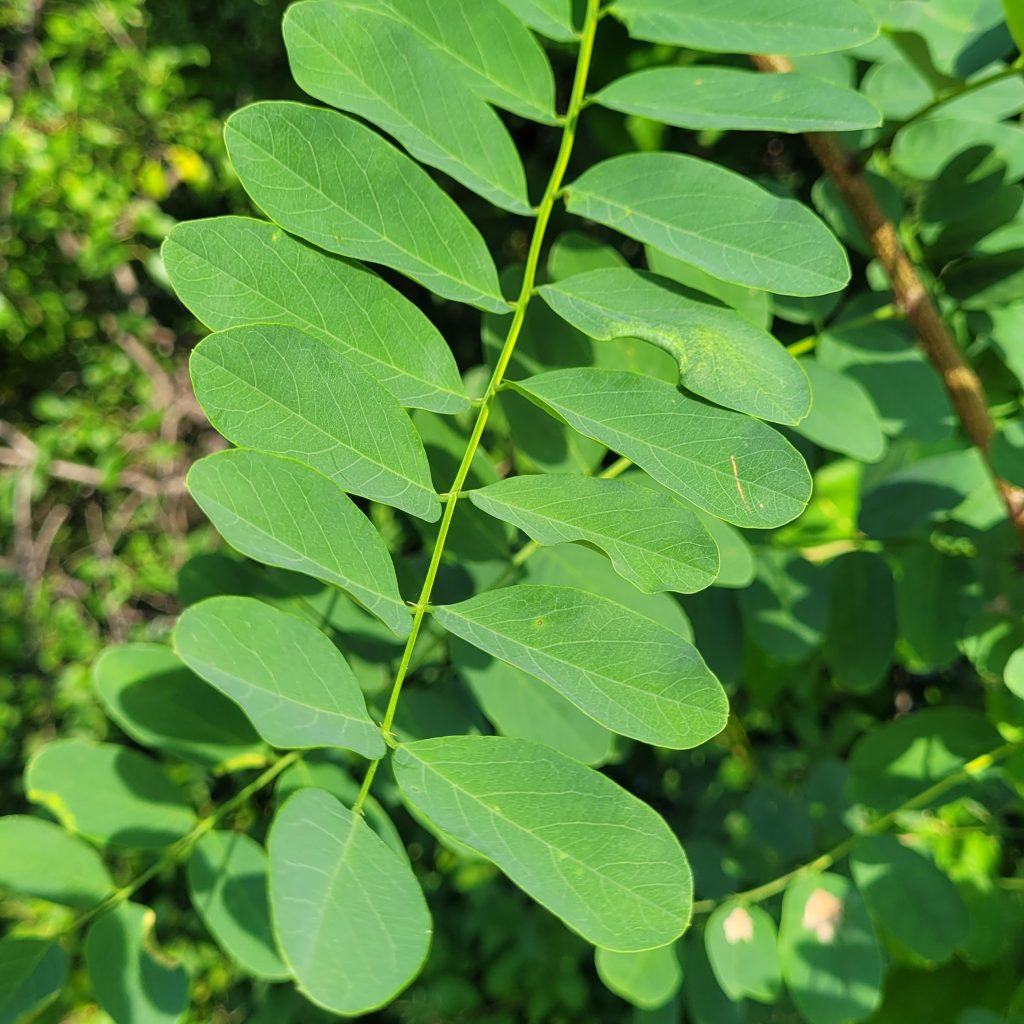
Black locust
Tree with fragrant spring flowers and flat brown seed pods
*Round leaf bittersweet was formerly known as Asian or oriental bittersweet.
Herbaceous invasive plants
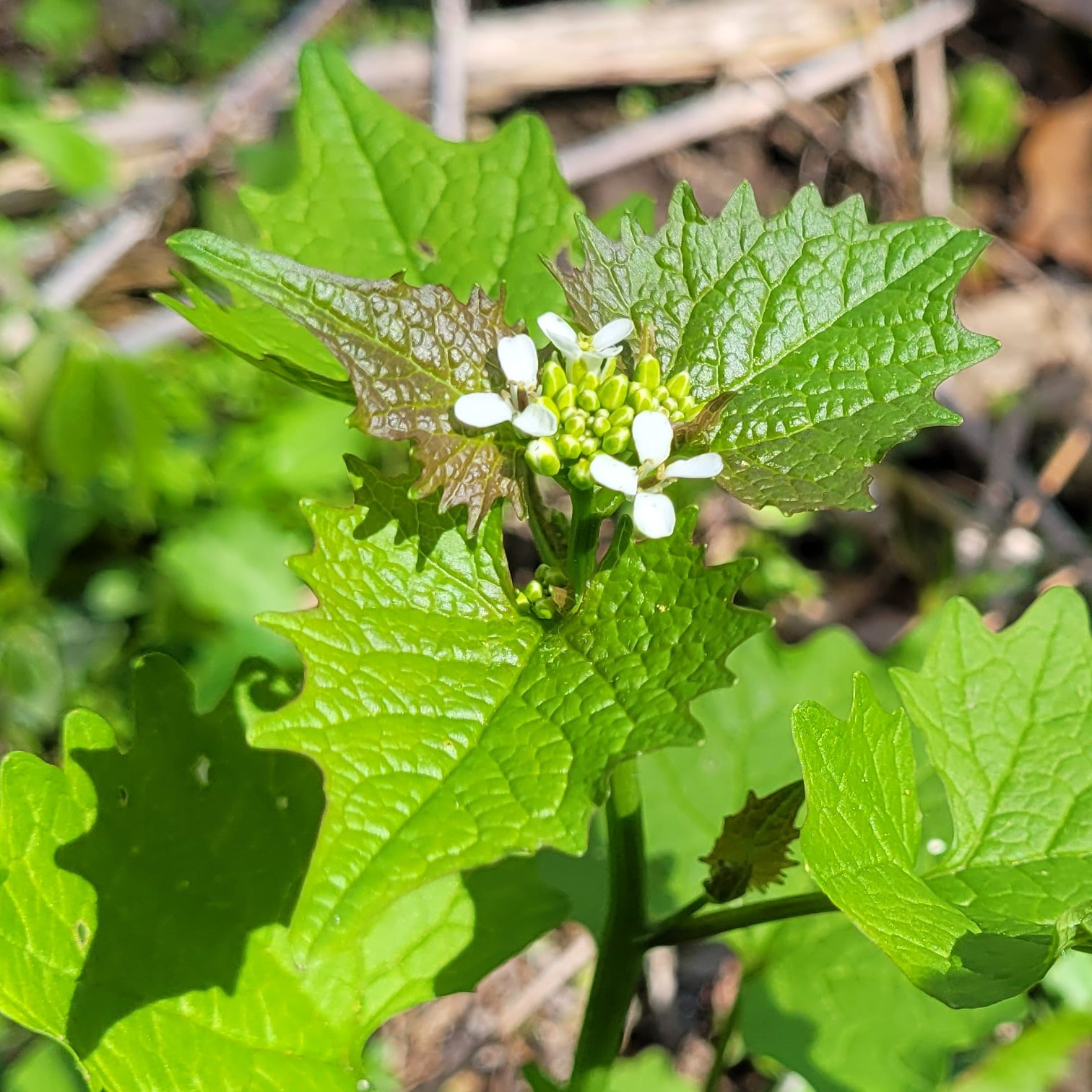
Garlic mustard
Biennial plant (flowers in the second year), smells like garlic
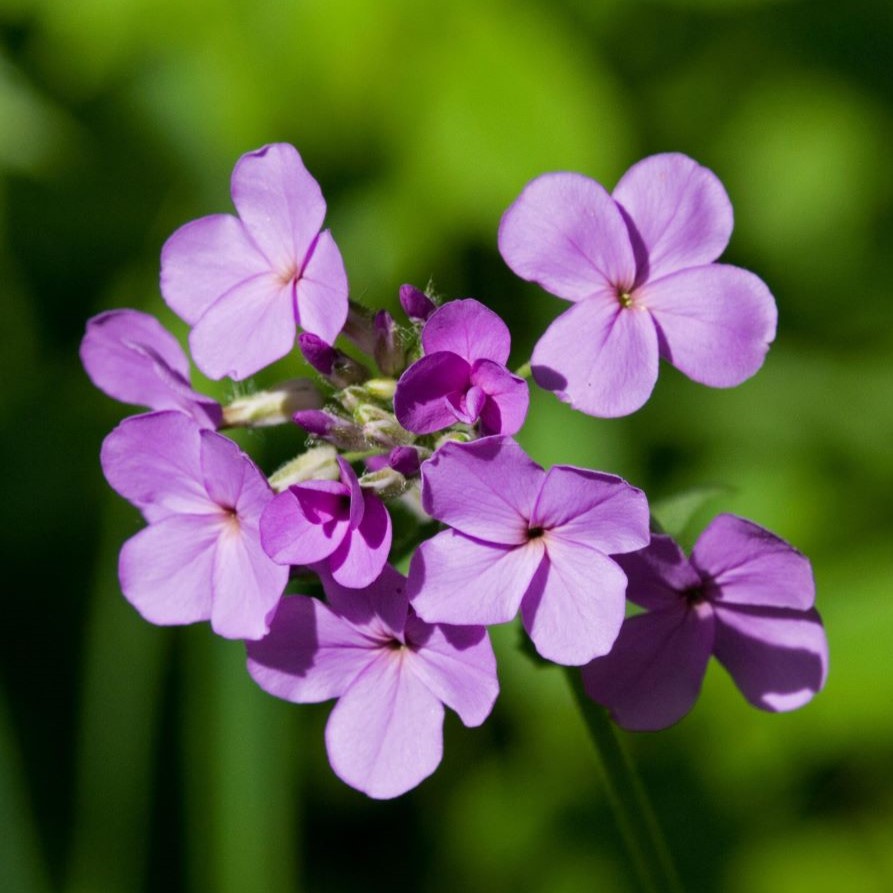
Dame’s rocket
Four-petaled flower, often included in “wildflower” seed mixes
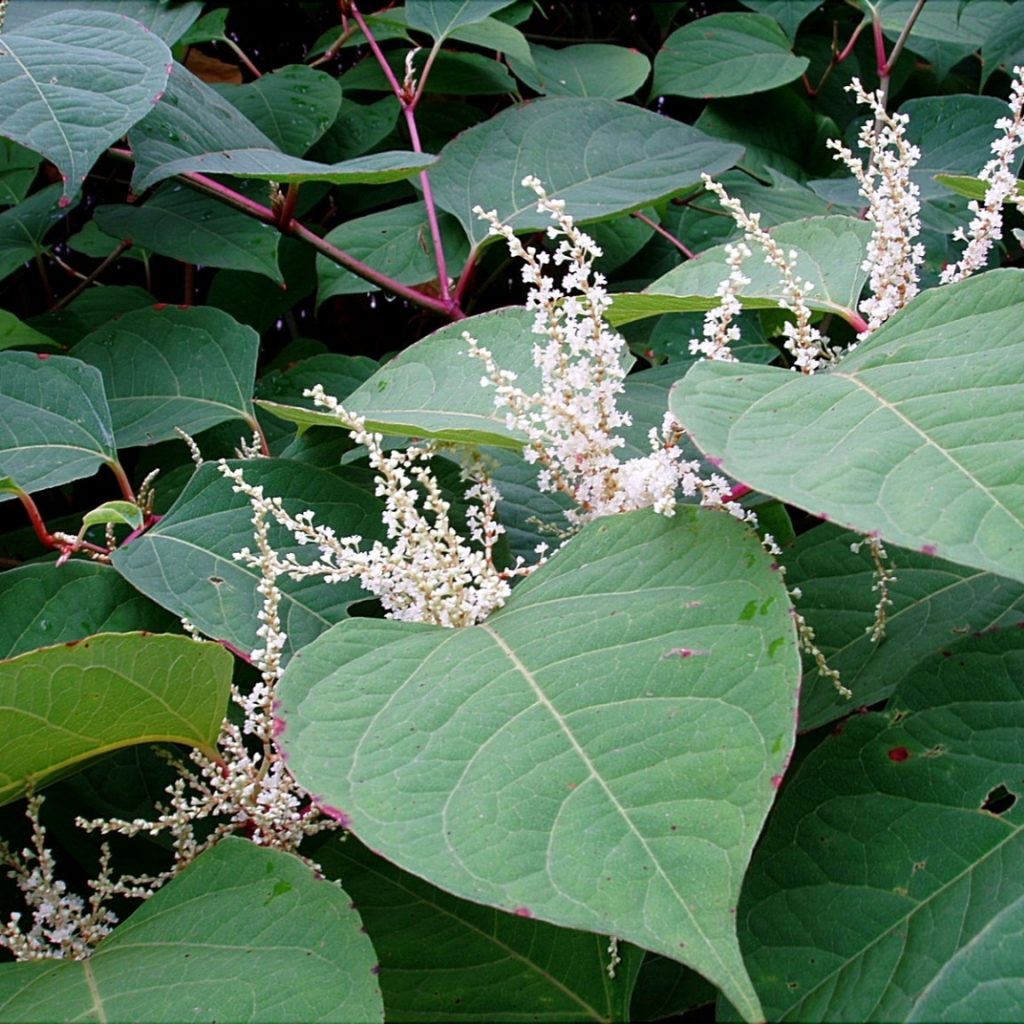
Japanese knotweed
Perennial with bamboo-like hollow stems, found in wet areas
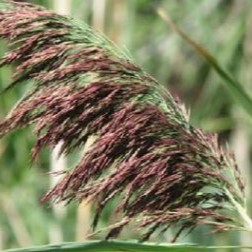
Phragmites/common reed
Perennial wetland grass, patches can spread up to 50 feet in one season
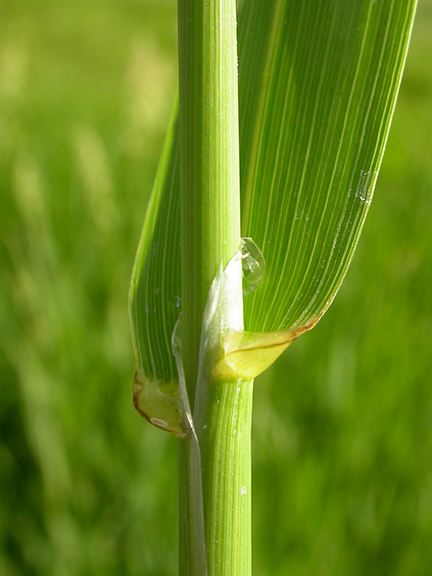
Reed canary grass*
Perennial wetland grass, one of the first wetland plants to emerge in spring
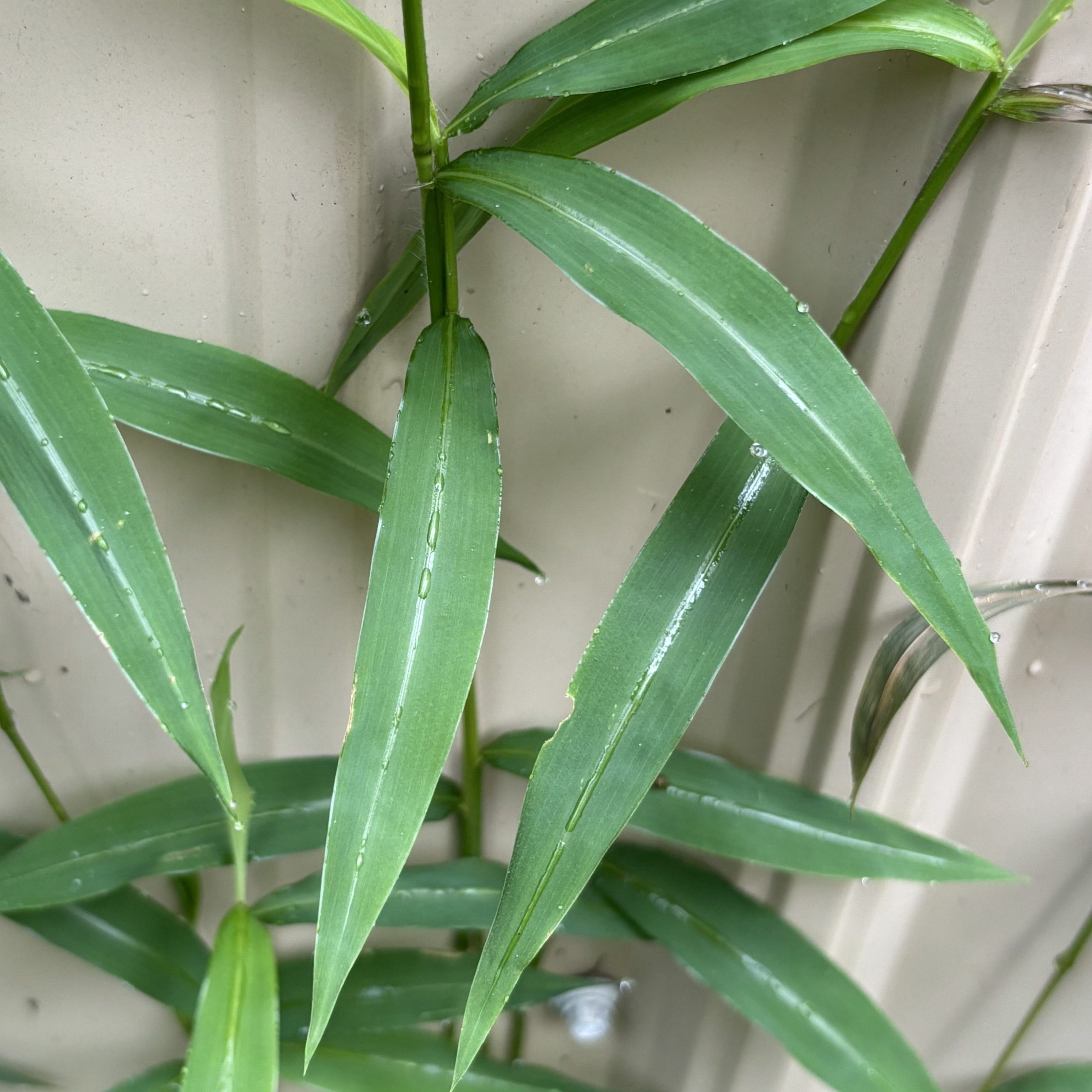
Japanese stiltgrass**
Annual grass, grows in branching, sprawling mats and increases fire risk
*Although reed canary grass is not on the DNR’s list of regulated species, this plant is still a problematic invasive species in wetlands.
**Japanese stiltgrass has been found only five times in Wisconsin so far: first in La Crosse County in 2020, and then in Rock, Walworth, Grant, and Dane Counties in 2025. However, we expect more to arrive throughout the state in the coming years.
Further Reading
- Invasive Plant Identification Videos (UW–Madison Extension)
- Invasive Plant Management Factsheets (UW–Madison Extension)
- Protect our Upper Midwest Forests from These Invasive Plants (Midwest Invasive Plant Network, 2025) (PDF)
- Midwest Invasive Plant Network Plant Control Database (database where you can enter a plant name and receive management recommendations along with best times to treat)
- Getting to Know Your Local Trees and Invasive Plants (UW–Madison Extension webinar, 2020)
- Impacts of Invasive Plants in Wisconsin Woodlands (UW–Madison Extension webinar, 2024)
- How invasive plants impact hunting, fishing, boating, gardening, hiking, biking, horseback riding, and other recreational activities in the Midwest (Midwest Invasive Plant Network) (PDF)
- Field guide to terrestrial invasive plants of Wisconsin (Midwest Invasive Plant Network) (PDF)
- Invasive species overview (Wisconsin Department of Natural Resources)
- List of regulated invasive species (Wisconsin Department of Natural Resources)
- Woody Invasives of the Great Lakes Collaborative (includes profiles of 28 species)
- Early Detection and Distribution Mapping System (report sightings of invasive species)
- Report Invasive Species (Wisconsin Department of Natural Resources)
- An Update on Invasive Plant Control (My Wisconsin Woods, 2024)
- Small Actions, Big Impact: Five Ways to Help Stop Invasive Species (Penn State Extension, 2025)
Keep learning about…
If you have questions about invasive plants and your woods or feedback on this webpage, contact:

Keith Phelps
Working Lands Forestry Educator
keith.phelps@wisc.edu
920-840-7504
Page last updated October 2025.
Additional photo credits:
- Japanese stiltgrass: Leslie J. Mehrhoff, University of Connecticut, Bugwood.org
- Wild parsnip photodermatitis: Pfc598, CC-BY 3.0
- Japanese stiltgrass: John Zaborsky, UW–Madison Renz Weed Science Lab
- Common buckthorn: anemoneprojectors via Flickr, CC BY-SA 2.0
- Japanese barberry: Richard Gardner, Bugwood.org
- Multiflora rose: Southeastern Wisconsin Invasive Species Consortium
- Round leaf bittersweet: Leslie J. Mehrhoff, University of Connecticut, Bugwood.org
- Dame’s rocket: David Cappaert, Bugwood.org
- Japanese knotweed: Jan Samanek, Phytosanitary Administration, Bugwood.org
- Phragmites/common reed: UW–Madison Extension Horticulture Program
- Reed canary grass: University of Main Cooperative Extension
- Japanese stiltgrass: John Zaborsky, UW–Madison Renz Weed Science Lab